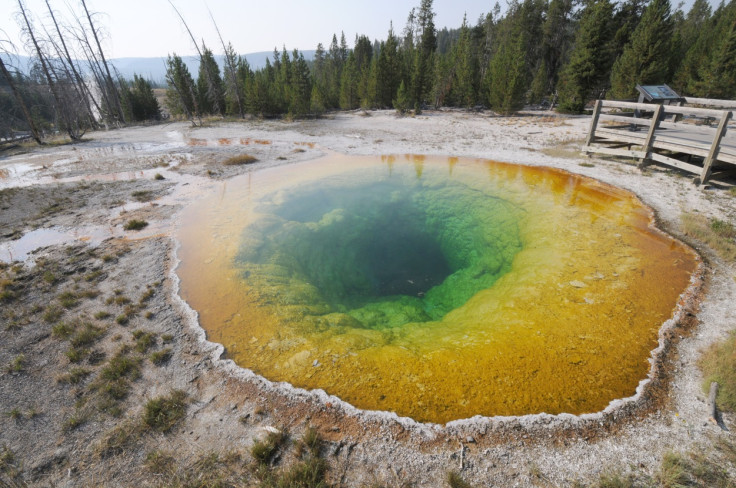Yellowstone: Hot spring colour changed due to pennies thrown by people making wishes

The next time you are tempted to make a wish by throwing a coin into a natural pond, lake or river, think again.
Optical researchers from Montana State University have found the colour of the world's third-largest hot spring has changed over time due to years of coins and other debris being thrown into the pool.
Their study, Colors Of Thermal Pools St Yellowstone National Park" is published in the journal Applied Optics.
The Morning Glory Pool is a hot spring in the Upper Geyser Basin of Yellowstone National Park in Wyoming, US, that was discovered in 1883.
Like many of the hot springs in the park, it gives off multiple colours, caused by pigmented bacteria in the microbial mats that grow around the edges of the mineral-rich water.
The team of researchers wanted to know what the colours in the spring looked like years ago, so they visited the park and took measurements and photographs at several pools, using digital SLR cameras and infrared thermal imaging cameras.
They took the data and created a mathematical model that was able to show empirically how the colours are formed through a mix of the pool's physical, chemical and optical variables.
What they discovered is the Morning Glory Pool had once been a uniform deep blue in colour between the 1880s to 1940s, when the temperature of the spring was significantly higher.
However, over the past 75 years, an accumulation of coins, rocks and other rubbish has partially covering the underwater vent in the pool, thus lowering its overall temperature, so the colours appear as orange, yellow and green.
The colours are caused by pigmented bacteria in the shades of orange and yellow that previously were unable to live in hotter temperatures, which are steadily spreading to the centre of the pool.
Park officials at Yellowstone are well aware of how humans have been impacting the spring and they have made several attempts to artificially induce geyser eruptions in order to clear the debris.
"We didn't start this project as experts on thermal pools. We started this project as experts on optical phenomena and imaging, and so we had a lot to learn," said Joe Shaw, professor at Montana State University and director of the university's Optical Technology Center.
"There are people at my university who are world experts in the biological side of what's going on in the pools.
"They're looking for ways to monitor changes in the biology – when the biology changes, that causes colour changes – so we're actually looking at possibilities of collaborating in the future."
© Copyright IBTimes 2025. All rights reserved.






















